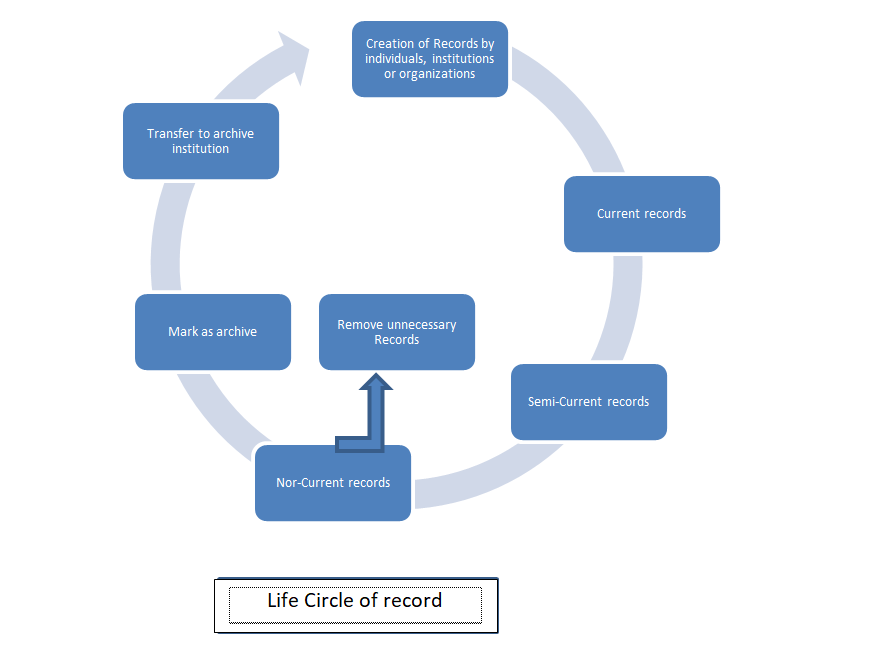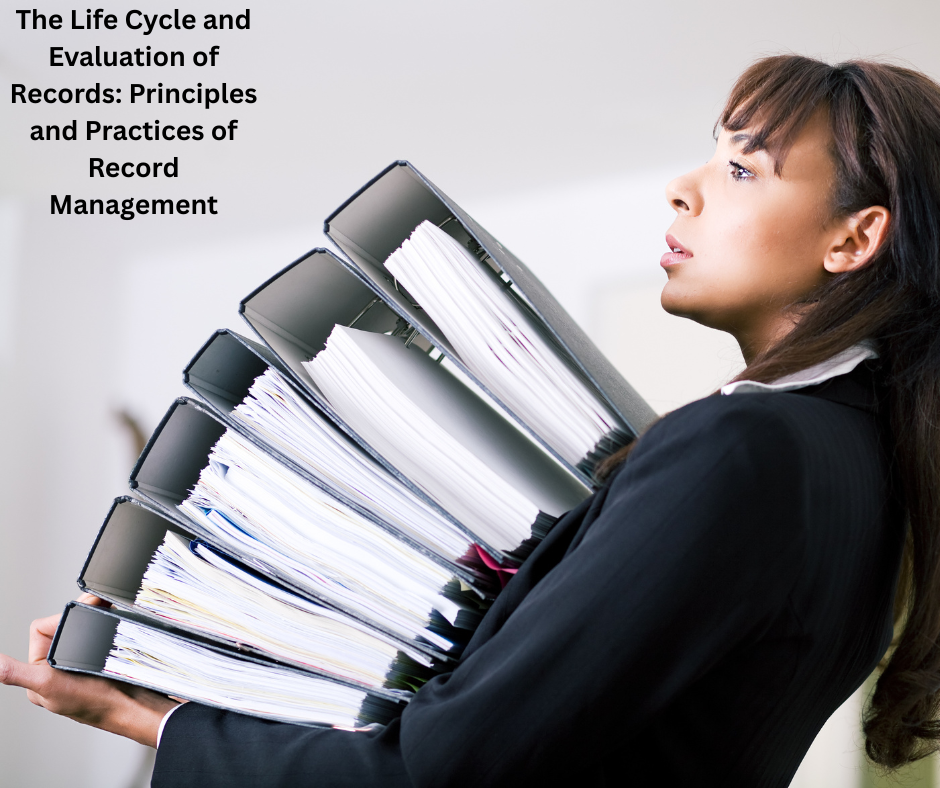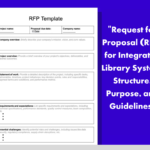Just as every living thing has a life cycle, records also have a life cycle. A life cycle extends from birth to death. The life cycle of a record basically starts from the creation of the record to its transfer to an archival institution. A record ends with its creation, use, identification as archives, and finally surrender to an archival institution. Unnecessary records end with destruction.

Objectives of Record Management:
Just as any work has objectives, Record management also has several objectives. The objectives of Record management are as follows:
1. The main objective of Record management is to properly preserve all Records by selecting the necessary Records;
2. Identifying records that have historical and research value and arranging for their transfer to the archival institution;
3. Organizing, arranging and processing necessary records;
4. Solving space problems, in this case, space problems are solved by identifying unnecessary Records.
5. Ensuring the retrieval of necessary information for special needs;
6. Preventing or controlling the creation of unnecessary Records;
7. Making arrangements for the destruction of unnecessary Records.
Stage of Records:
1. Primary stage of records:
In the primary stage, after the creation of records for a specific purpose, the work of the river is carried out for administrative or executive needs. Basically, the period from the creation of records to their use and proper storage is identified as the primary or representative stage.
2. Second stage of records:
When many records or files are no longer needed in the office after the end of administrative work, such files are stored by attaching them to a file cover and tying them with rope or ribbon and writing the contents on the file. Such records are called semi-permanent records. Usually, these records are stored in their own records room. The records are properly classified and stored so that they can be used as necessary references when needed. This stage of the record is identified as the second stage
3. Third or final stage of the record: The third stage of the record is called the last or final stage. At this stage, the final fate of the record is determined. Unnecessary records are identified, removed and destroyed. Historical and research records are identified and transferred to the archival institution. The real value of the record lies in its permanent preservation as an archive in the archival institution. A list of unnecessary records must be preserved while destroying them. Valuable records are usually transferred to the archival institution after completing 25 years. The record ends with the transfer of the record to the archival institution.
Record Evaluation:
Records are being created continuously in various government or semi-government institutions. Due to the creation of a large number of records, record inflation occurs. Due to record inflation, space problems arise. Therefore, it is important to evaluate the records immediately after the administrative need is over. The process through which records are selected for permanent preservation as archives is called evaluation. The purpose of evaluation is to verify the archives-related qualities of a record. A significant and important aspect of record management is record evaluation. Basically, record evaluation plays an important role in record management. In the record evaluation process, the man of archives content is determined. The person who evaluates the record is identified as the evaluator.
Principles of Record Evaluation:
Record evaluation is a complex subject. Archivists were not aware of record evaluation before the twentieth century. As the number of records increased, awareness of record evaluation methods increased. The following methods or principles can be followed in record evaluation:
- It is desirable to have the cooperation of the archivists who created the record in evaluating the archival qualities of the record. Archivist Jenkinson believes that the evaluation of the record will be correct if the record creators and historians evaluate it together. His opinion can be followed in the evaluation of the record.
- Records can be evaluated twice or thrice. Records can be evaluated after 7 years, 15 years and 25 years after the end of administrative work. After the first and second evaluation, they can be transferred to a temporary record room. After the third or final evaluation, after 25 years, the records are transferred to the archival institution and unnecessary new ones are destroyed.
- In the field of administration, copies of office or office orders are seen. Due to this, record inflation occurs abnormally. While evaluating records, evaluation can be done keeping this aspect in mind.
4. Since no formula for record evaluation has been discovered, the record can be evaluated according to the conventional rules of archives.
5. During record evaluation, repetition of records should be avoided.
6. Each file should be analyzed to see whether the records are needed from future researchers, historians and administrative points of view – this is the main purpose of evaluation.
7. While evaluating records, the necessity, importance, quality, etc. of the institution that created the record should be taken into consideration.
8. Records can be evaluated at any time during the record life cycle.
9. After the evaluation, a list of records with temporary value should be prepared and arrangements should be made to destroy them.
10.The appraiser must survey the relevant record room while conducting the appraisal. However, the appraiser must have sufficient knowledge, skills, and experience in the subject of appraisal.
11. The appraisers will appraise the records according to the category of the record (A, B, C), i.e., the new classification.
12.The appraisers will appraise the records based on the office-by-office basis, i.e., the records of each institution are different, so the appraisal process for all the records of the office will not be the same. However, rules and principles can be applied to appraise the records of the same institution or similar type of institution.
13. The appraiser must evaluate the records with impartiality and skill. It is definitely not advisable to evaluate the records with vindictive behavior. In this case, the new appraiser must evaluate carefully, so that he does not become biased and guilty.
In conclusion, effective record management ensures the systematic control of records throughout their life cycle—from creation to final disposition. Through proper evaluation and preservation, institutions can retain records of enduring value while eliminating unnecessary ones to maintain efficiency. Ultimately, well-managed records serve as vital evidence of administrative, historical, and research significance for future generations.




